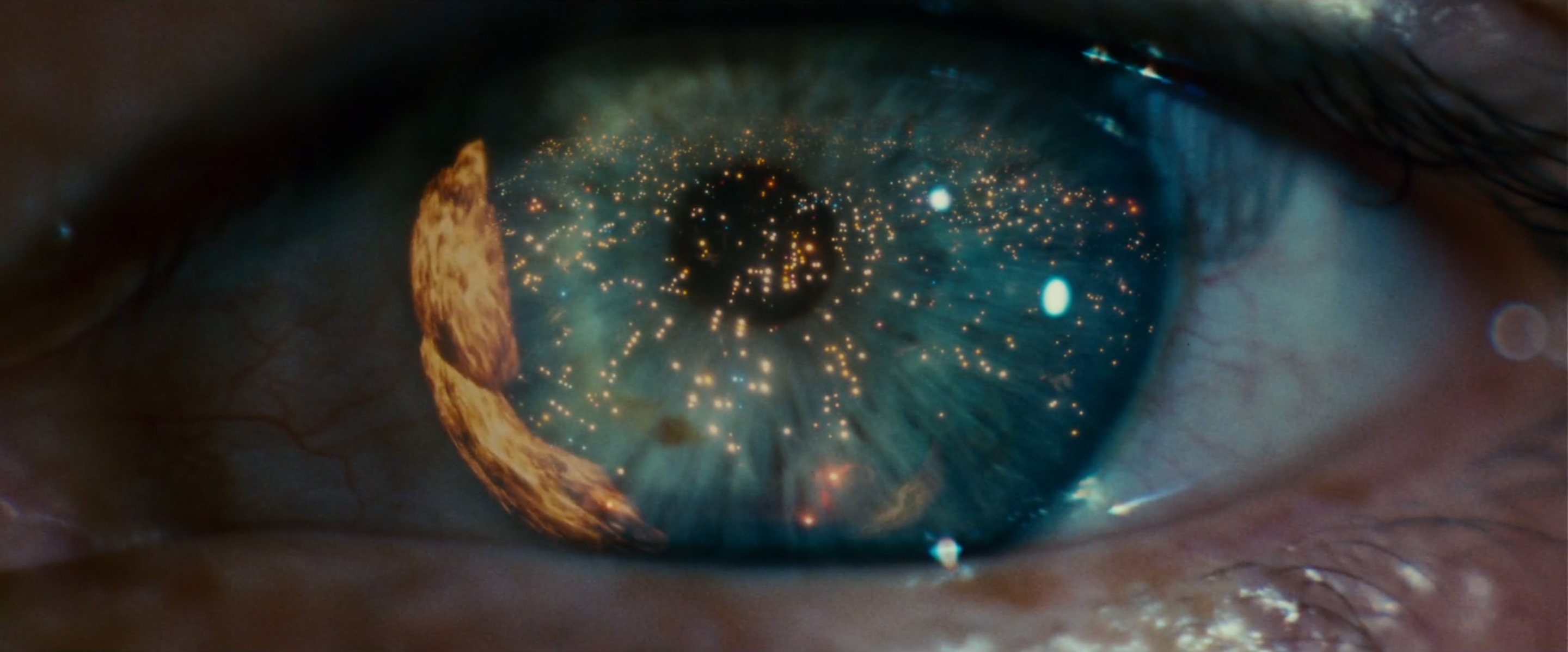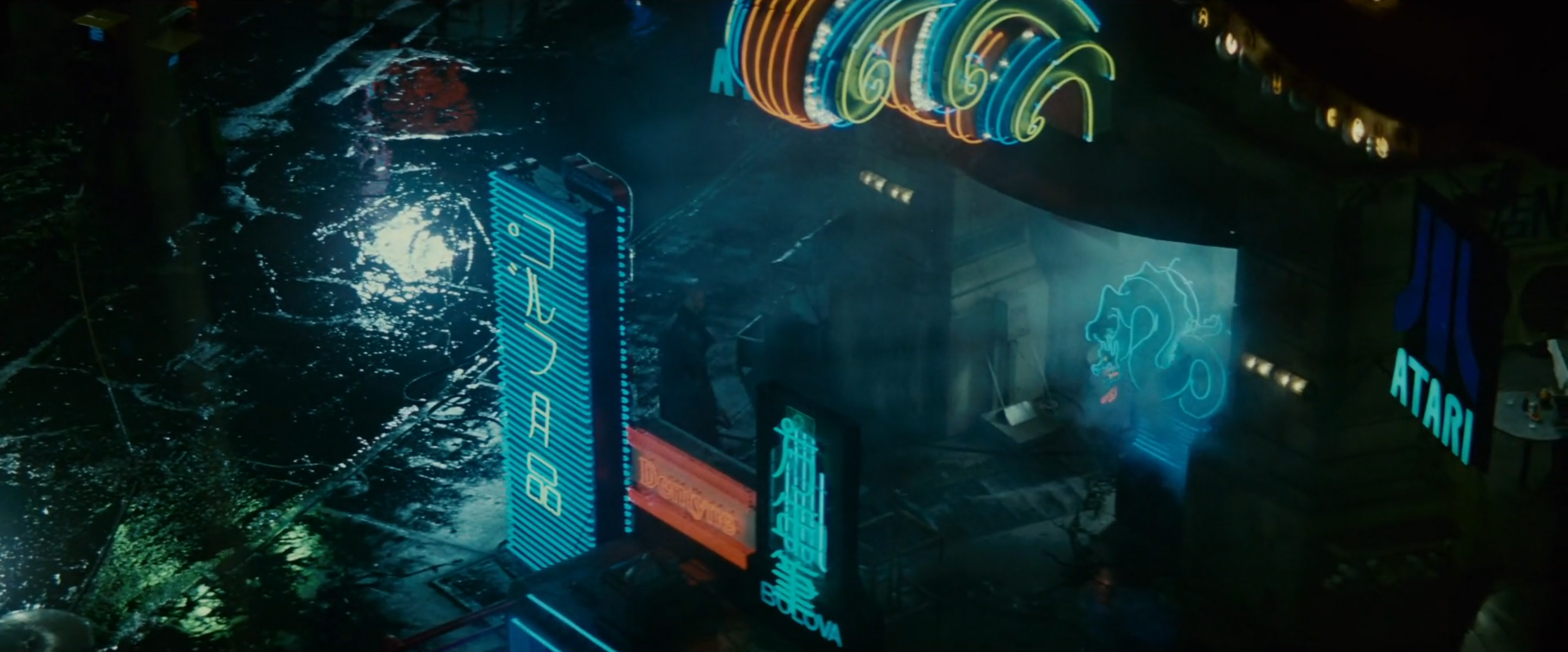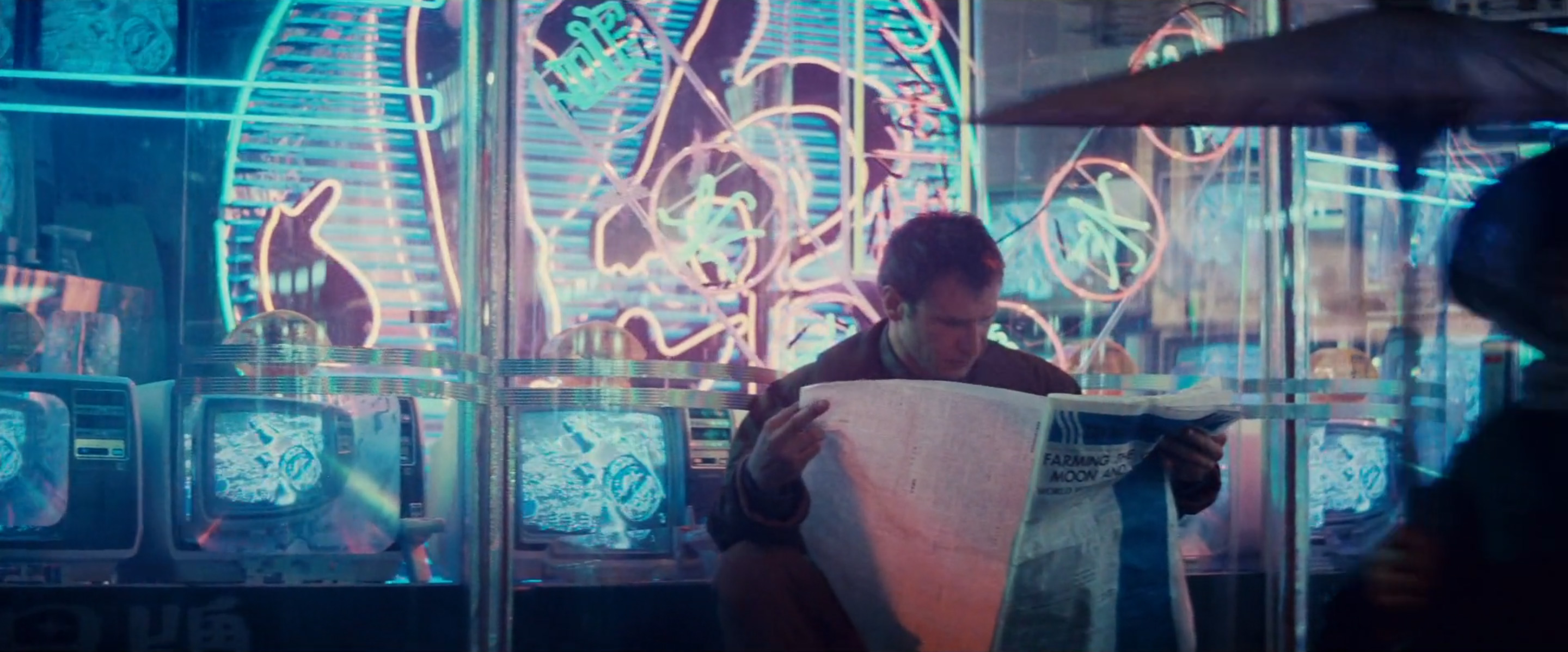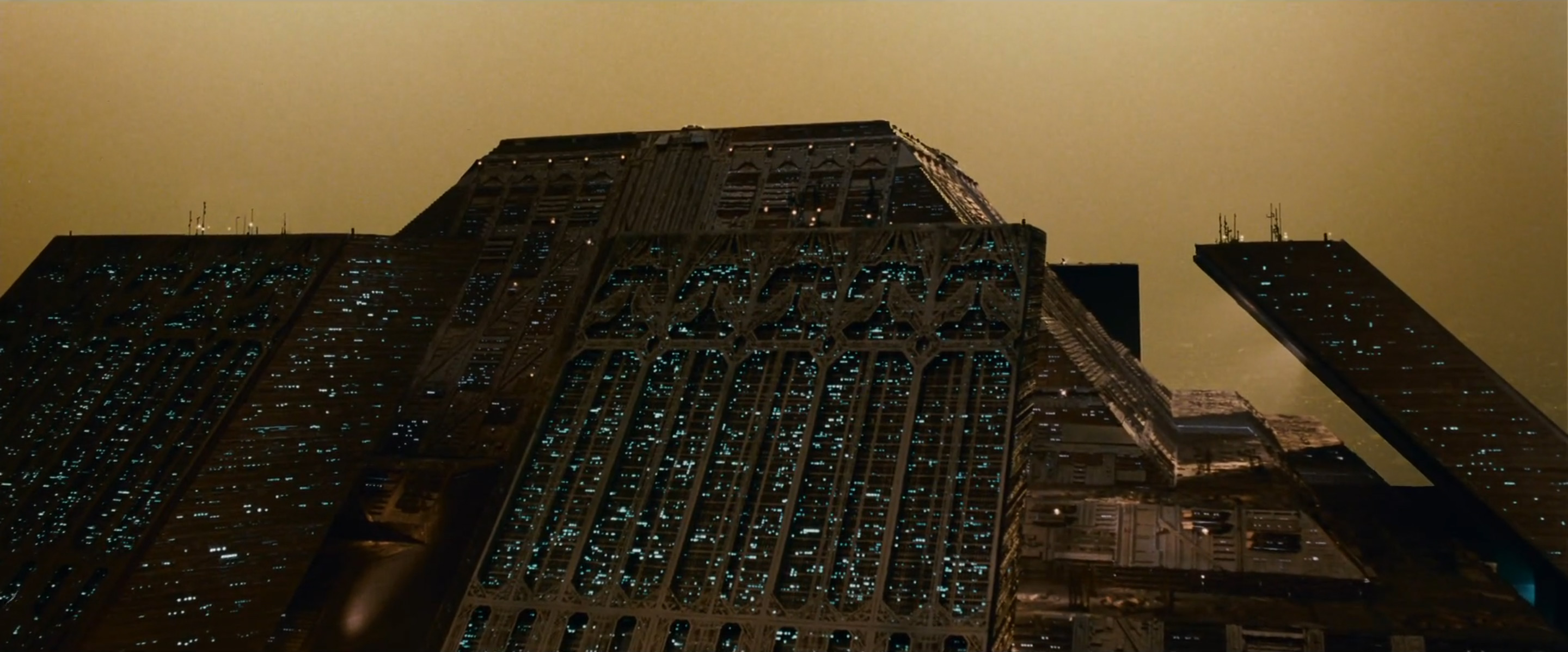This is a cult movie that has become a major influence in pop culture over time. Before the upcoming release of Blade Runner 2049, we deliver an aesthetic analysis of Blade Runner, directed by Ridley Scott in 1982. The story takes place in a dystopian Los Angeles in 2019, it is a striking poetic reverie on human condition. Each sequence contains infinite subtleties: from the fascinating light of Jordan Cronenweth to the stunning scenery often sketched by Ridley Scott himself. This aesthetic power, rarely equaled, will prefigure the cyberpunk movement of the mid 1980s.
Opening sequence
The gaze on the future, symbolized by one of the first sequences, showing an eye in which the flames of an industrial chimney are reflected, has an essentially contemplative dimension. Opening on an industrial landscape, the first sequence announces the spectator what will follow. Everything is there, the atmosphere, the aesthetics, the theme. This eye is that of Ridley Scott, who invites us to enter into his universe and contemplate this futuristic apocalyptic vision of a terrifying future.
The influence of film-noir
The film is rooted in a futuristic version of the “film noir” style, it resumes its codes to integrate them in the sci-fi genre. Thus we find this high-contrast style, traditionally shot with a low key lighting approach to play the mystery and suspense of the film. We find this duality of likable killers and corrupt cops, giving a blurred space between right and wrong.

The visual genesis of Blade Runner is fully inspired by the graphic novels of Jean Giraud, known as Moebius. As well, we notice an influence of painter Edward Hopper and his iconic 1942 painting Nighthawks, how he uses and magnifies the light.
A moody atmosphere
Scored by Vangelis, this revolutionary music between electronic and analog, combined with the blues echoing the past with jazz saxophones, give the film a deep melancholy, evoking death and ghosts. The soundtrack floods the film with little hauntologic whispers. No doubt that visuals also go in this direction.
Many artists and designers participated in creating the look, most notably Ridley Scott himself. Ridley Scott admired Stanley Kubrick, and in both their cases attention to every set detail resulted in the heavily textured look of their films. The essence of the world of Blade Runner relies on the image; Scott is considered to be very meticulous in the composition of his scenes, while the photography conceived in parallel by Jordan Cronenweth also plays a leading role.
Blade Runner absorbs us in a mysterious megalopolis thanks to a quite singular ambience. Rain and night are an ubiquitous constant throughout the story. The scenery is misty, and everywhere smoke escapes from the conduits with strident noises. Many multicultural world flock to the streets at a frantic pace. All these signs plunges us into a Los Angeles overcome by an oppressive pollution. Indeed, during an interview Scott confessed that the trio “night, wet, smoke” was at the heart of the aesthetics of the film for essentially economic reasons, because it would have indeed had to spend much more to obtain a satisfactory rendering with natural daylight.
The archetype light
Light plays a crucial role in this version, conferring a very strong identity to Blade Runner. In a dark Los Angeles, where natural light is simply absent, night and abundant rain choke us.
“Blade Runner is a piece that calls for extremes. It’s naturally a wonderful vehicle for this kind of lighting.”
It becomes very difficult to tell what time of day the scenes are taking place in. Most of the shots were done by night, but in the film’s reality you can’t ever tell what time it is. Only the intrusive lights of the city penetrate into all enclosed spaces, even in Deckard’s apartment, constantly illuminated by artificial beams. These shafts of light are the result of neon signs, giant electronic advertisements, billboards, street lights.
The budget for these neon lights exceeds the 100 000 $, as Cronenweth evokes: “The character and consequently the lighting of the street was achieved through the use of dozens of neon signs. We rented a number of them from One From the Heart”. This choice of light translates into strong light/dark contrasts, very characteristic of the film-noir genre.
We can also note the use of flashing lights, adding to the oppressive trait of this futuristic city. “Blade Runner is a piece that calls for extremes. It’s naturally a wonderful vehicle for this kind of lighting. It’s theatrical, but it will be very real in the film. In this movie, I think you’ll just accept it. It transcends theatricality”.
On the same note, we observe the use of two main colors: blue and orange achieving that atmosphere between cold and warm. Also, the moisture and the ubiquitous smoke come to spread these colors, literally bathing the scenery.
Removing this natural aspect of lighting is an important aesthetic choice made by Scott to depict the future so as to eliminate a natural humanity of the world we occupy and enclose it in a fully industrialized dystopia. Within its very own eternal daylight, this choice contributes to the question of artificiality in the future that Blade Runner treats.
An industrial architecture
The infernal cityscape depicted was inspired by the ICI Wilton chemical firm close to where Scott grew up in near Teesside in northeast England. Another large part of the architectural influences come from Asian mega-cities such Hong-Kong or Tokyo as well as Moebius’s drawings.
The key building in Blade Runner is the monumental triangular hulk of the Tyrell Corporation headquarters, an evident throwback to the pyramids from Aztec and Mesoamerican civilizations. Towering triangular structures have always been expressions of power, both financial and spiritual.
Memories of photographs
An interesting topic that is evoked several times in the film is the use of family photographs in order to implant memories to bioengineered beings called replicants. Unlike this world where everything is artificial (synthetic animals, light, replicants…), these photographs illustrate an attempt at identification or a definition of being, a desire to be related to human emotions.
Like us, the replicants question the nature of their roots and seek their origin. They do not know that the memories they cherish are false, and think themselves human. Until it’s detective Deckard himself who comes to ask himself the question of his condition, is he himself human? How could he know it, nothing distinguishes him from a replicant. Thus, the film (like others of the same genre) raises the question of the veracity of the memory: how to prove humanity?
The visual aesthetics of Blade Runner are timeless, and so predominant that they are today permanently implanted in our collective imagination. They’re so strong that they have influenced not only other science-fiction films and music videos but also video-games, architecture, set design, fashion, products, and advertising. Some will reproach that over representation of the aesthetic. It is sure that it can tell the story by itself, a contradiction of fascinating imagery within a world of decay, the gloomy vision of neo-noir. If you want to deepen the review, we recommend the very good documentary Dangerous Days: Making Blade Runner (2007). And while waiting for the next opus, you can view the anime short, Black Out 2022, directed by the author of Cowboy Bebop, and thus happens in between.











































